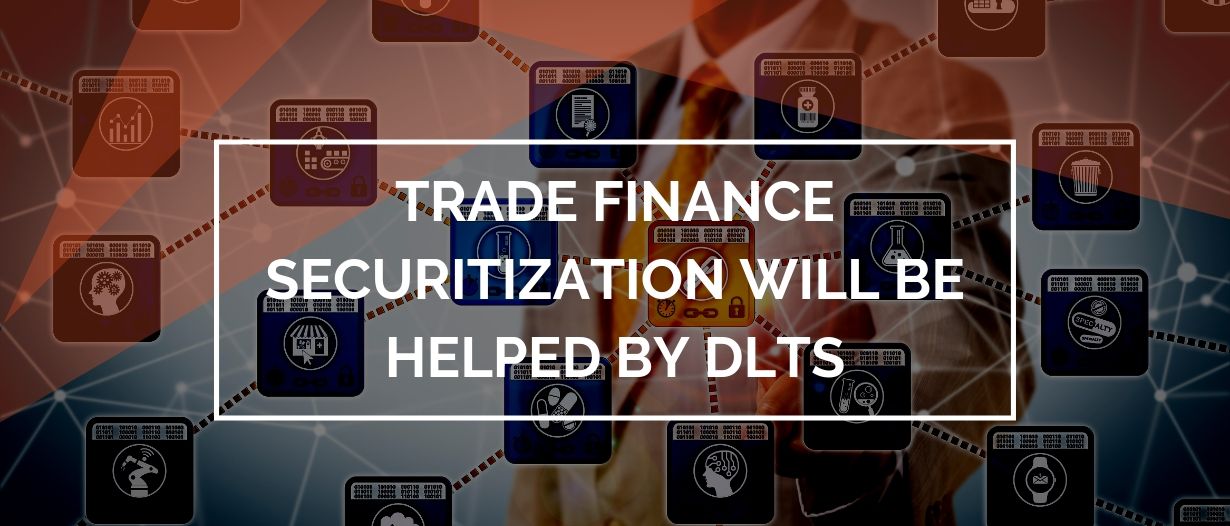This short note explores the potential second order effect of Blockchain and other new technologies on the Trade Finance ecosystem. TFGs Persiana Ignatova heard from Vipin Bharathan at Hyperledger.
As chair of the Capital Markets Special Interest Group (CMSIG) in Hyperledger, an open source consortium for Digital Ledger Technologies (DLT), I feel that taking a look at this emerging trend would also help us with our work with established capital markets products and DLTs as it goes back to the basics of DLTs and securitization and capital markets. Where possible, data obtained through the use of surveys and papers by industry bodies like the ICC and ADB are cited and used. The data from these observations are fused with current developments to make informed guesses about where the Trade Finance sector is headed, including securitization.

Traditionally, Trade Finance is a function that mitigates the risk between supply and demand, the duo that drives all economic interactions. The Trade Finance function has been fulfilled by banks and financial institutions since they are operationally structured to work across federal and national borders as well as having expertise to price specific deals commensurate with associated risks. They also have the balance sheet to support this activity that fits well within their role. The current level of Trade Finance deals is in the range of $15 Trillion.
Banks used to hold most of the Trade Finance exposures on their balance sheets or traded these illiquid assets amongst each other. Institutional investors were not offered these assets or shied away from them due to their lack of transparency. With the 2008-2009 crisis and the rebooting of regulation, the capital needed to hold the TF exposures on balance sheet increased, making it more costly for banks to hold and trade them. The regulation also tightened down on the KYC/AML components hence creating further friction in closing TF deals. This is reflected in the data from the ADB survey and the ICC survey. 90% of the banks note difficulties in the AML/KYC area. On the other side, Institutional investors weighed down with mounds of cash and starved of yield were looking to juice their returns. This prompted the move of Trade Finance exposures from bank books to institutions. Aiding this is the recorded low rate of default for Trade Finance paper. This is much lower than 1% (0.2% to 0.035%) according to data published by ADB and ICC. These are very safe assets; because any importer who wishes to continue to do business would pay their suppliers, even without the protection of collateral. This bears a striking parallel to the numbers from microlending; the rate of defaults in micro-lending are extremely low as published data from organizations like Kiva show.
Even with these sort of high quality assets, ADB has reported a Trade Finance gap of up to $1.5 Trillion. This is the gap between the requests for Trade Finance from Enterprises and those approved by banks. The figure was taken from the bank books. The actual figure is probably much larger. The rejection rate is more than 45% for MSMEs (Micro, Small, Medium Enterprises). If you are a woman entrepreneur, you are likely to be denied 2.5 times as much as a man. This is in spite of the proven fact that women are better credit risks than men. As trade is the engine of progress, lifting populations out of poverty and despair, the Trade Finance gap affects poorer countries disproportionately and compromises the achievement of the United Nations Sustainable Development Goals (UNSDGs) many of which can be linked to trade. The root causes are cited to be lack of collateral, KYC/AML issues, not enough margin and so on. The gap is expected to increase, trade is in turmoil with protectionism on the rise. When denied financing, firms use alternative routes with substantially higher cost or abandon plans for expansion.
Securitization of trade finance assets to distribute assets from bank books to increase their fungibility and improve their balance sheets was attempted earlier. This did not succeed in taking off, or only succeeded at very small securitizations, in a $15 Trillion market even a $500 million securitization is only 0.0033%. This was due to several factors, including lack of proper ratings. In established debt security markets, ratings and risk analysis are achieved by transparency into the underlying assets and having a model to value them creating a modicum of objectivity. For example in mortgages and certain other ABS, the data structure and the data itself is normalized and can be found in certain commercially available repositories which can be used for analysis. This data is gathered from public sources. There exists no comparable data source or analytic method for trade finance yet.
For prior instances of securitization, Special Purpose Vehicles (SPVs) had to be created with difficulty in order to hold the underlying Trade Finance exposures. These exposures had to be chosen for portfolio diversity and granularity including geography of origin and other characteristics for maximum protection. In addition, the banks had to guarantee the deals through some form of insurance or other sureties attached to the SPV. Once securitization takes off and there is a healthy secondary market, supply of trade finance can keep up with demand from enterprises that need it and the Trade Finance gap should shrink.
The widespread adoption of the MPA (Master Participatory Agreement) proposed by Bankers Association for Finance and Trade (BAFT) should help normalize the assets. Of the changes in the MPA, the most important ones are the ones allowing for “a true sale”, shielding the transaction from the seller’s creditors and “no optionality” which means having to adopt the agreement in toto without changes. These protect the holders of the assets as well as reduce the variation in agreements, which should aid securitization. In addition to portfolio diversity and granularity the other dimension is inter bank asset pooling, where the assets originate from multiple banks, increasing the diversity. DLT is the vehicle to bring this about.
DLT based technology to record the progress and track the various documents seems a natural for trade finance. The resulting ledger increases the efficiency of the process and the security of the various steps. There is also more transparency. In the current system there are more than 5000 data interactions (from the ICC whitepaper) mostly fields copied endlessly, since only about 80 fields are needed, capturing these at source is very important. A DLT based solution can certainly achieve this. Add to this the improved granularity in tracking due to IoT, both in location as well as the environmental attributes; integrated and protected. There are impediments, the first is reliance on physical documents; regulators, standards bodies and others are working on this problem. The second is interoperability. The third is resistance to change. There are many more, but these seem to be the most important.
There have been many innovations focused on generating and storing secure and durable documents through the medium of DLTs, including the problem of tying true text to smart contract execution. The number of DLT based projects in supply chain and trade finance is more than 30; the list reads like the denizens of a strange menagerie: Komgo, We.Trade, Marco Polo, Voltron, Wave etc. For maximum efficiency, securities need to be created using a mix of assets stored on different DLTs. Interoperation of these dlts can be achieved by using an orchestration layer that sits above these projects or by creating a digital document format that can be freely interchanged. Most of the DLT projects have the latest notions of KYC and AML built into them. Ideas around the ownership of data are being explored using Self-Sovereign Identities (SSI) and in the case of Enterprises using standards like Legal Entity Identifier (LEI) which is global and very appropriate for Trade Finance. Analytics and ratings calculations are also more accurate by having cleaner, more standard data. All of these; standardisation of documents and their structure, clean data about the underlying, built in analytics through smart contracts, and easier and more comprehensive KYC augurs well for securitization and a healthy secondary market.
The social angle for onboarding the MSMEs in the developing world should look to examples of leap-frogging in the payment and micro-lending space. Small foot-print apps distributed through mobile phones are needed to interact with the blockchain, in many cases using the credit scores built up on other platforms. This will certainly bring the smaller and more far flung players closer to the banks servicing them. This is the origination side, for distribution, bonds structured on an aggregation of such assets can be sold to corporate social responsibility programs. The compelling case for securitization will be a reduction in the spread possible through efficiencies, emergent effects and greater distribution. All towards the growth of trade and the achievement of the UNSDGs. This optimism is also reflected in the ADB survey in the 3 to 5 year horizon.

































